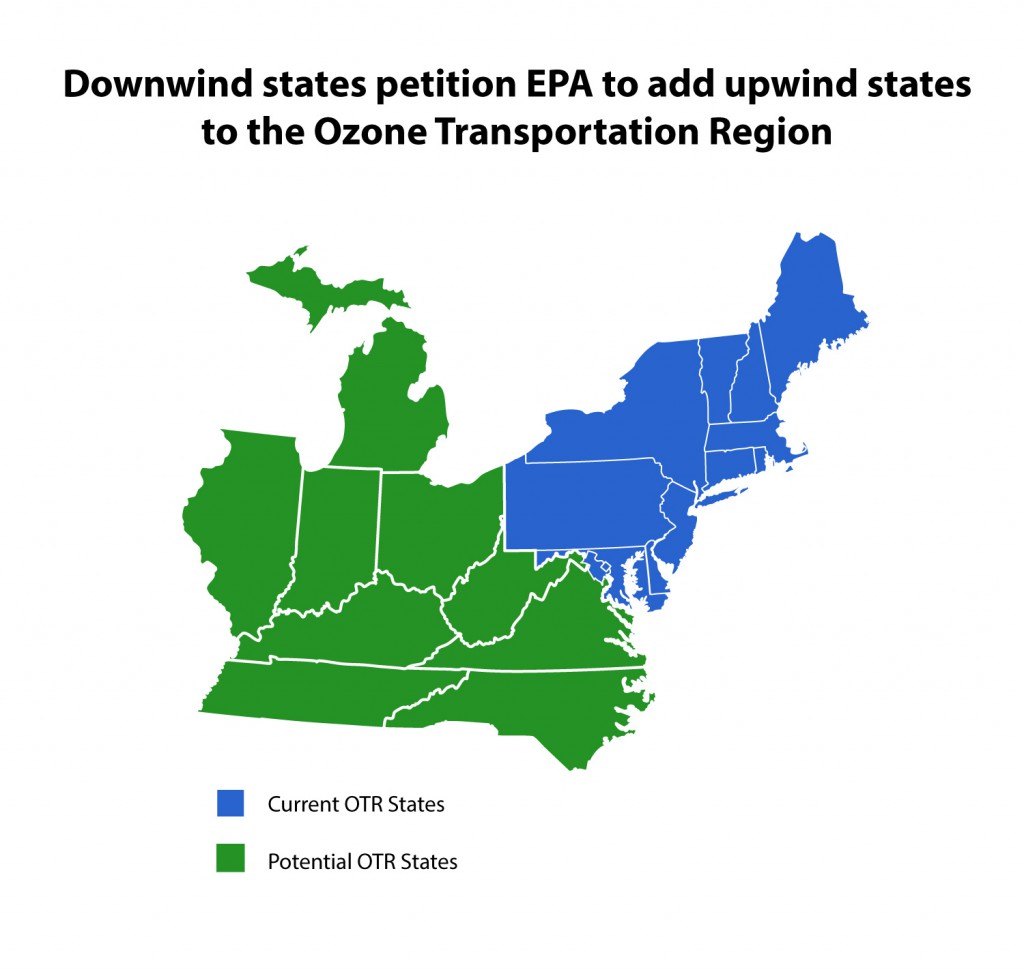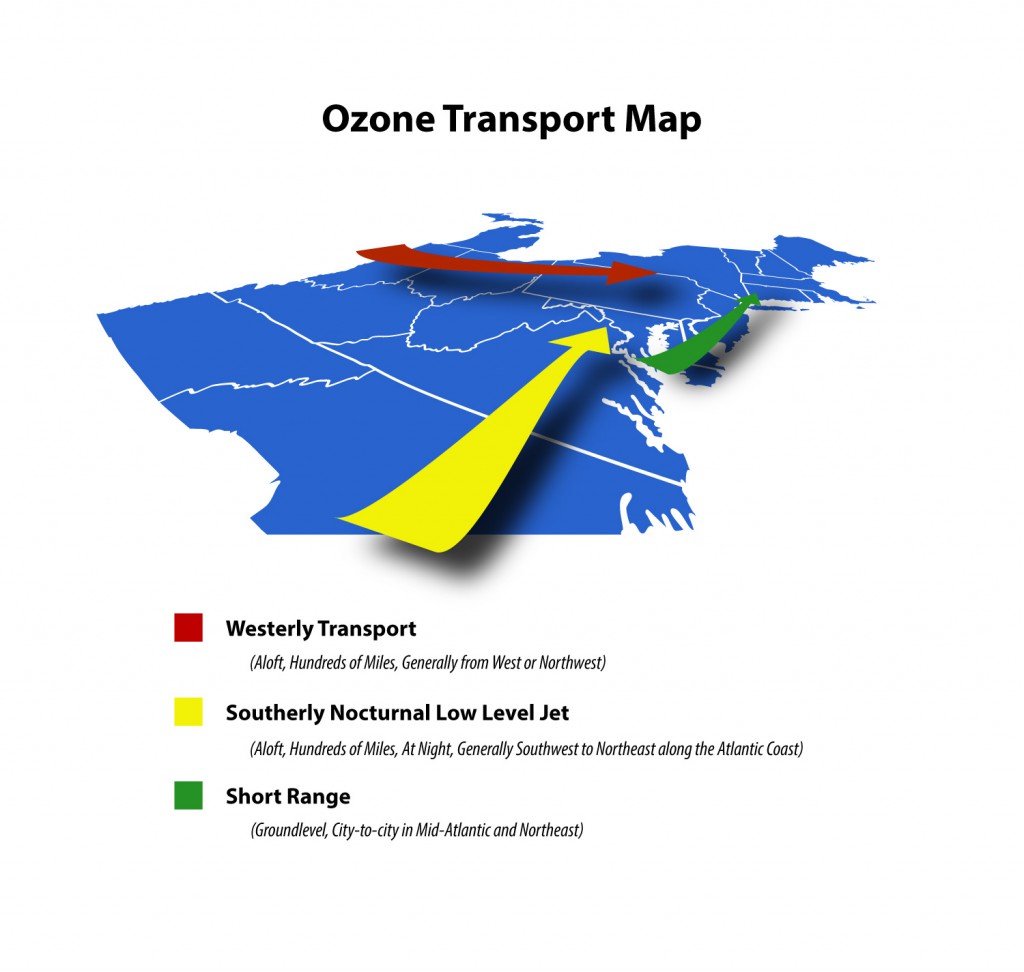Maryland among Northeast and Mid-Atlantic states seeking to curb air pollution from upwind states
MEDIA CONTACTS:
Samantha Kappalman
samantha.kappalman@maryland.gov
Jay Apperson
jay.apperson@maryland.gov
FOR IMMEDIATE RELEASE
Eight states file petition to require upwind states to take action; move would require upwind states to reduce air pollution, protecting Marylanders’ health
BALTIMORE, MD (December 9, 2013) – Maryland and seven other Northeast and Mid-Atlantic States today petitioned the U.S. Environmental Protection Agency (EPA) to require upwind states to reduce air pollution generated within their borders, which causes asthma, respiratory disease, and other public health problems downwind.

The multi-state action is aimed at requiring nine upwind states – Illinois, Indiana, Kentucky, Michigan, North Carolina, Ohio, Tennessee, Virginia, and West Virginia – to be a “good neighbor” by reducing air pollution emissions that are carried by prevailing winds and contribute to the formation of ozone to the north and east. The petition seeks long overdue commitments from the upwind states to protect the health of downwind residents and to level the playing field for businesses.
The petition cites decades of inaction by the upwind states during which time the eight Mid-Atlantic and Northeastern states have spent tens of billions of dollars to reduce their own air emissions. The petition asks EPA to require the nine upwind states to join them in what is known as the “Ozone Transport Region” (OTR). Under the federal Clean Air Act, states added to the OTR would have to take actions consistent with the air pollution efforts of the downwind states through use of readily available control technologies and reliance on cleaner fuels to generate power.
“By making better choices we have significantly reduced air pollution generated within Maryland’s borders. Now, the air pollution that blows into Maryland from states upwind of us must be cut to protect the health of our citizens,” said Governor Martin O’Malley. “The filing of this petition is a crucial step in addressing this problem. It is time for the upwind states to do the right thing. We look forward to working with them – and to a future with cleaner, healthier air.”
States filing the petition – all current members of the OTR – are: Connecticut, Delaware, Maryland, Massachusetts, New Hampshire, New York, Rhode Island, and Vermont.
Under Section 176A of the federal Clean Air Act, states can petition the EPA to add any state to an air quality region such as the OTR if there is reason to believe it is the source of pollution causing violations of air quality standards elsewhere. The EPA Administrator is required to approve or disapprove of such a petition within 18 months.
In submitting the petition to EPA, the eight downwind states told EPA Administrator Gina McCarthy, “We believe expansion of the transport region and implementation of the required controls in upwind states are necessary for all of the OTR to achieve attainment in a timely manner. We also believe that the consultation process that is such an important part of the OTC’s activities can benefit all states in an expanded OTR in the assessment of the ozone transport problem and result in the development of effective solutions.”
Millions of residents in the downwind states petitioning EPA are exposed to unhealthy levels of ozone, which can irritate the respiratory system — causing coughing, throat irritation and chest pains and aggravating asthma and other chronic lung diseases. Ozone and other air pollutants have also been linked to premature death.

Despite aggressive actions taken by downwind states to reduce air pollution generated in-state, EPA modeling shows that interstate transport of air pollution contributes significantly to violations of health-based air quality standards for ground-level ozone within their borders. As much as 70 to 98 percent of this ozone air pollution problem is blown in from upwind states – and parts of some downwind states, including Maryland, would remain in violation of federal standards even if they eliminated all of the pollution generated within their borders.
Industries and electric power plants in downwind states have invested heavily in pollution control technologies and additional emissions reductions would come from smaller sources at greater cost. The cost of removing an additional ton of pollution in downwind states is estimated at between $10,000 to $40,000 – compared to as little as $500 a ton in upwind states, where even some basic control technologies have not been installed.
In Maryland, actions to reduce air pollution generated in-state include the implementation of the Maryland Healthy Air Act and the Maryland Clean Cars Program. Preliminary results from 2012 air sampling and emissions records show continued improvement in Maryland’s air quality. Maryland power plants have invested $2.6 billion in technology to comply with the Maryland Healthy Air Act. But Maryland is still not meeting standards for ground-level ozone. As much as 70 percent of the State’s ozone air pollution problem comes from upwind states – and ozone transported into the State has been measured at levels that already violate the EPA’s revised standard.
The filing of the petition is one is a series of legal steps being taken by some downwind states to address ozone transport. Those steps include supporting EPA and environmental groups in their successful petition for Supreme Court review of a lower court ruling that vacated EPA’s Cross-State Air Pollution Rule, which addresses air pollution from power plants that contributes to unhealthy air in downwind states.
More information is available on an MDE fact sheet, the transmittal letter to EPA and a multi-state press release.
How Ozone is Formed
Ground level or “bad” ozone is created when two types of air pollutants – nitrogen oxides (NOx) and volatile organic compounds (VOC) – react in the presence of sunlight and warm temperatures. These air pollutants are generated from industrial facilities and electric power plants, motor vehicle exhaust, and gasoline vapors. Air pollution from upwind states is transported into the Ozone Transport Region on prevailing westerly winds from the Ohio RiverValley and from the southwest along the Interstate-95 urban corridor.
# # #
